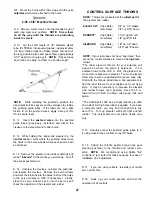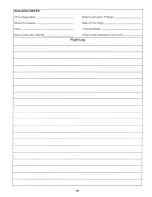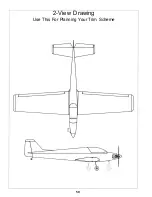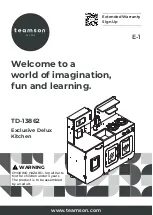
AMA SAFETY CODE
Read and abide by the following Academy of Model
Aeronautics Official Safety Code.
GENERAL
1. I will not fly my model aircraft in competition or
in the presence of spectators until it has been proven
to be airworthy by having been previously successfully
flight tested
2. I will not fly my model aircraft higher than
approximately 400 feet within 3 miles of an airport
without notifying the airport operator I will give right of
way to, and avoid flying in the proximity of full scale
aircraft Where necessary an observer shall be
utilized to supervise flying to avoid having models fly
in the proximity of full scale aircraft.
3. Where established, I will abide by the safety
rules for the flying site I use, and I will not willfully and
deliberately fly my models in a careless, reckless
and/or dangerous manner.
4. I will not fly my model unless it is identified
with my name and address or AMA number, on or in
the model.
5. I will not operate models with pyrotechnics
(any device that explodes, burns, or propels a
projectile of any kind)
RADIO CONTROL
1. I will have completed a successful radio
equipment ground check before the first flight of a new
or repaired model
2. I will not fly my model aircraft in the presence
of spectators until I become a qualified flyer, unless
assisted by an experienced helper.
3. I will perform my initial turn after takeoff away
from the pit, spectator and parking areas, and I will not
thereafter perform maneuvers, flights of any sort or
landing approaches over a pit, spectator or parking
area
4. I will operate my model using only radio
control frequencies currently allowed by the Federal
Communications Commission
IMAA SAFETY GUIDELINES
As of September 15, 1989
(Portions reprinted as follows)
For the purpose of the following IMAA Safety
Guidelines, the term "Giant Scale" refers to a radio
controlled model aircraft, either scale or non-scale,
which has a wingspan of 80 inches or more for
monoplanes, or 60 inches or more for multi-winged
model aircraft, or, true quarter scale aircraft.
Sections 5A-D: RADIO REQUIREMENTS
(suggested minimum requirements)
5A Servos to be rated heavy duty with a minimum of
24 inch ounce of thrust for non-critical control
functions, and a minimum of 45 inch ounce of thrust
for stress functions The use of one servo for each
aileron and one for each stabilizer half is strongly
recommended Use of dual servos is also
recommended
5B On-board batteries shall be 1000MAH up to 20
lbs , 1200 MAH to 30 lbs , 1800 MAH to 40 lbs , and
2000 MAH over 40 lbs flying weight.
5C Redundant and fail-safe battery systems are
recommended
5D The use of anti-glitch devices for long leads are
recommended
Sections 9A-F: MECHANICAL COMPONENTS
9A Servo arms and wheels to be rated heavy duty.
9B Control horns to be rated heavy duty
9C. Control surface linkage, in order of preference
1 Cable system (pull-pull)
2. Tube-in-tube (push-pull)
3. Arrow Shaft, fiberglass or aluminum, 1/4"
or 5/16" 0 D
4 Hardwood dowel, 3/8" O.D.
9D. Hinges to be rated heavy duty and manufactured
for Giant Scale use primarily Home-made and
original design hinges are acceptable if determined to
be adequate for the intended use
9E Clevis and attachment hardware shall be heavy
duty 4/40 thread and rod type 2/56 thread size rod is
acceptable for some applications Clevis is to have
lock nuts and keepers
9F Propeller tips should be painted or colored in a
visible and contrasting manner so as to increase the
visibility of the propeller tip arc.
56




































